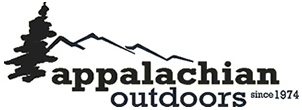By: Levi Opsatnic
If you’ve ever stepped foot on a popular hiking trail, in an outdoor shop, or just about anywhere else, there’s a good chance that you’ve encountered a pair of Merrell shoes. A company known for quality footwear and a line that covers everything from minimal trailrunning shoes to insulated winter hikers, Merrell has been able to make quite the name for themselves since their inception in 1981. And with a history like Merrell has, it only makes sense to highlight the path of hard work and determination that has lead this brand to become what it is today.
Taking a step back thirty-five years ago, Merrell was started by two executives of a very popular ski company, Rossignol. During a time when there was a need for quality hiking boots, Clark Matis and John Schweizer teamed up to solve this problem and provide hikers with the support and traction that they needed. However, they quickly realized that this was more than a two-man job, and with that, they joined forces with Randy J. Merrell. At the time, Randy was crafting custom hiking boots that had a retail price around $500. With the industry expertise of Matis and Schweizer, paired with Randy’s attention to detail and fine craftsmanship, Merrell was able to construct their first pair of hiking boots at a more affordable price. These shoes were released to the public in the year of 1983, and needless to say, they immediately gained popularity.
The next three years of Merrell’s career proved to be quite prosperous. And in the year 1986, the company sold its 25,000th pair of shoes. But that wasn’t the only event that occurred in 1986, as that’s the same year that Randy J. Merrell decided to sell his portion of the company and return to his life as a high-performance boot maker.
As the years went on, Merrell continued to develop as a company and undergo change. By 1987, Merrell was sold to Karhu, a Finnish sporting company that was able to grow Merrell’s sales to $4 million; two years later, they hit the $6 million dollar mark. By 1992, Merrell’s sales reached $20 million and their products were sold in twenty-two different countries. With the brand’s popularity continually progressing, Wolverine World Wide bought the company and increased sales another $3 million by 1997.
After Wolverine bought Merrell, they expanded their line of products to include lightweight and durable shoes designed for trail running. Their first trail running shoe, the “Jungle Runner” was an instant hit and provided customers the comfort that they need for fast pursuits across unpredictable terrain.
Merrell’s dedication to innovation didn’t stop there; they continued to push the envelope in design and eventually crafted their signature Jungle Moc shoe. This shoe is still a favorite in the Merrell line and features a comfortable slip-on upper with a burly traction-focused sole. Offering a casual look with an ability to hit the trail, Merrell sold 3.5 million pairs of Jungle Mocs by the year 2002.
Realizing that they were able to craft a shoe for just about everyone, the year 2007 marked Merrell’s entrance into the world of clothing and accessories. Nearly as popular as their shoes, Merrell’s clothing was quickly accepted into the world of athletes and explorers. By 2010, Merrell’s products could be purchased in 151 different countries—this was quite the step for Merrell.
Where is Merrell today? Well, they’re still producing some of the finest footwear and clothing on the market. And whether you’re looking to run your way into the office or hike your way away from civilization, Merrell is sure to have a product to keep you satisfied. For reasons like those, Appalachian Outdoors is proud to be dealer of Merrell and offer our customers some of the best products on the market.

